NJW&C 15: Omnia Mutantur

Hey, Kids! It’s Nice Jewish Words & Comics!, the latest installment from Neil Kleid's monthly newsletter with updates and info about his latest projects!
“Omnia Mutantur.”
It’s a Latin phrase which means “everything changes.”
Wanna know how I knew that? From reading goddamn X-Men comics.
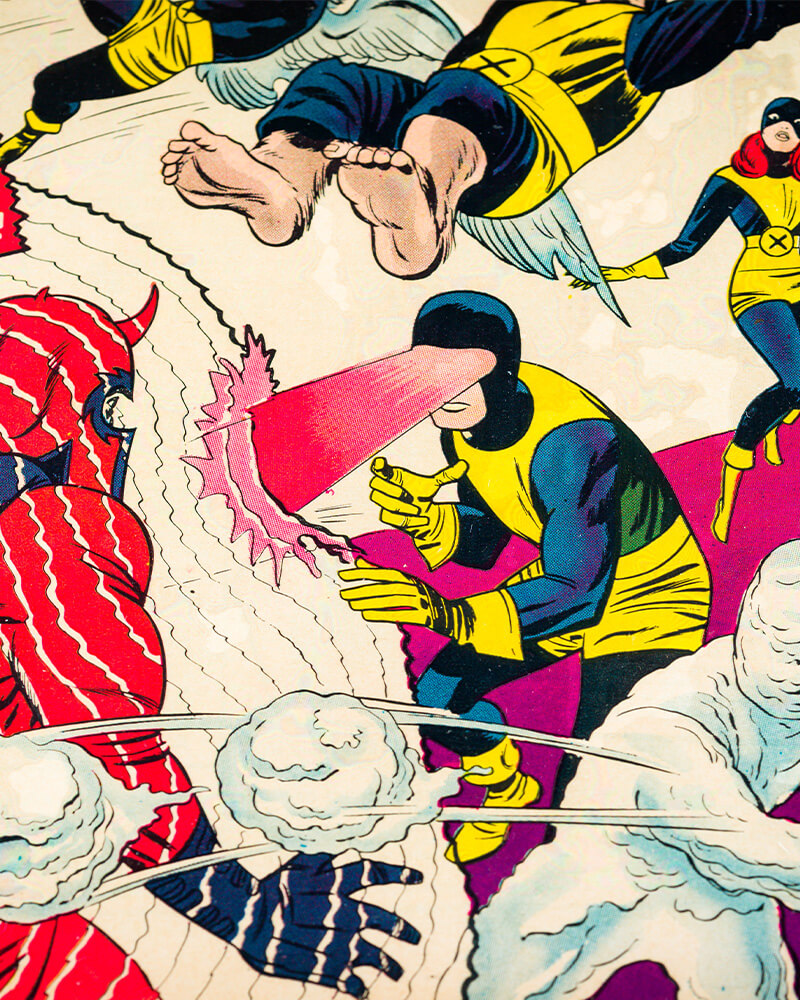
FATAL ATTRACTIONS
I wasn’t always an X-Men fan. In fact, when I first started collecting comic books, I couldn’t tell my Summers brothers apart, nor did I have the slightest clue what stars or garters ever were. I had no clue there were at least two Jewish characters featured in the lushly illustrated, operatically structured Uncanny X-Men series, and names like Logan, Kurt, Piotr, Lorna, or even Scott and Jean were so far off my comics radar, that my radar was firmly fixed over at DC Comics on the goings on in Gotham City or inside the Justice League satellite.

No, I didn’t start out reading X-Men books. But somewhere along the way…at some point when I was still in grade or middle school…they came for me, like a pack of Sentinels hunting mutants in the night. The first time I ever encountered the X-Men was as character in the highly-popular, widely-known Marvel Comics mini-series Marvel Super Heroes Secret Wars. Either my father had tossed a random issue my way amid the usual Friday afternoon stack he’d plucked from a spinner rack in Little Professor’s bookstore in Oak Park, Michigan (“read this; leave me alone”), or I’d grabbed it myself off the rack at our local 7-11. Drawn by characters I knew—Spider-Man, Captain America, The Human Torch—and obviously entranced by the tie-in to the Secret Wars action figures and vehicles filling the shelves at Toys R’ Us, I ended up reading and enjoying the series…but kinda skimmed the parts featuring the X-Men, because well, I had no idea who they were. I liked the feisty dude with claws, sure, but I was more drawn to Colossus and Nightcrawler, and the villainous Magneto, who stood apart from the other Marvel baddies (I still had no idea that he was Jewish.) So at the time, I registered who the X-Men were, and left it at that. I even bought a Magneto action figure (I needed more villains to fill out my Tower of Doom playset; the only other characters were Dr. Doom and Kang the Conqueror, the latter of whom seemed kinda lame) and my cousin got the Wolverine toy with detachable claws. And that was it.
Until Dad brought home Uncanny X-Men #210. Most of the X-characters I knew were there on the cover—from Secret Wars—but there was one I didn’t. And they all looked kind of broody and dangerous. And the tag read “Mess With Us--Make Our Day.”
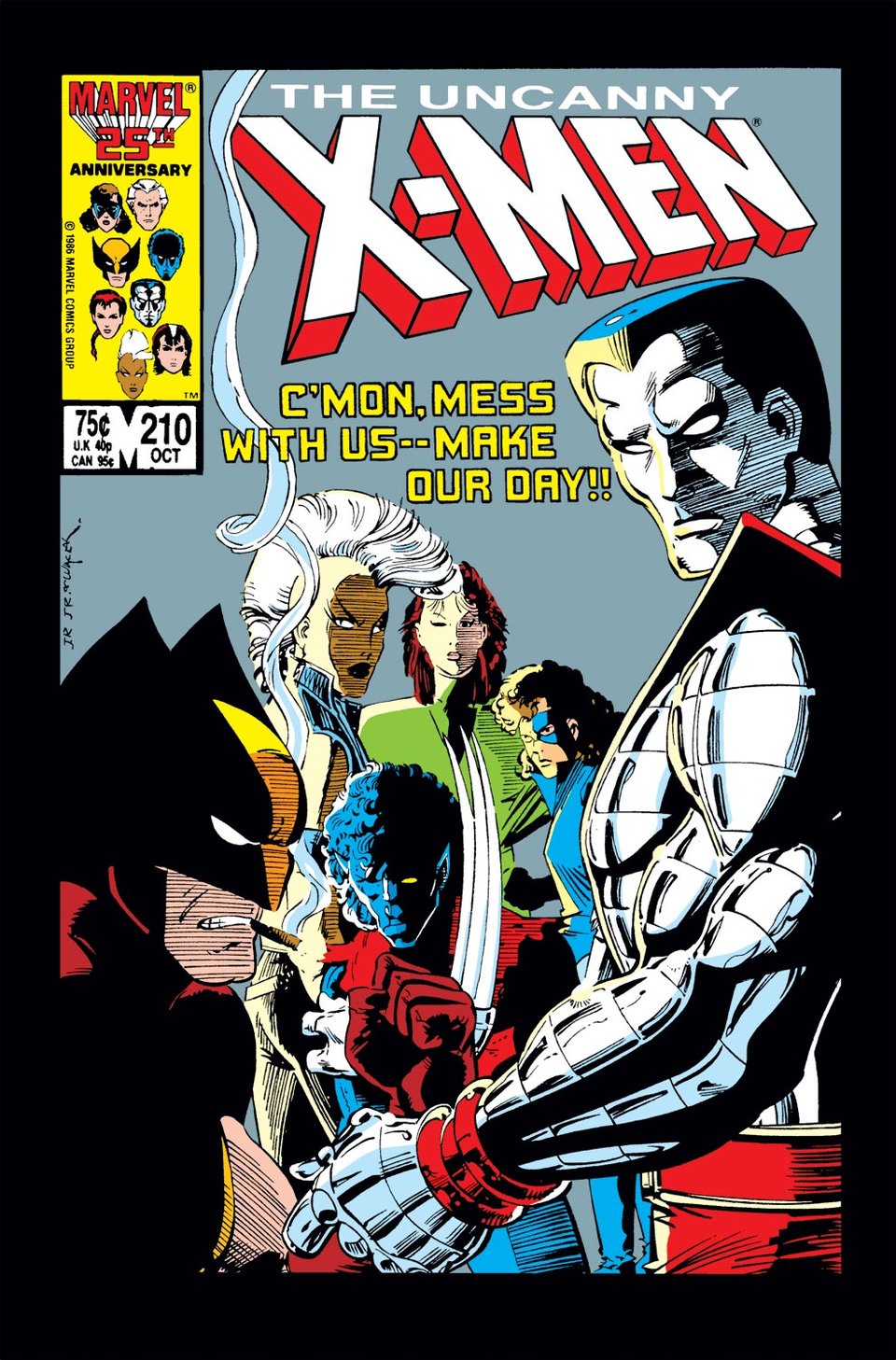
So I read it.
And yeah, like most comic book reading dudes in 1986, I was kind of hooked.
HOUSE OF M
Slowly, I learned about the X-Men. That girl with the others, on the cover of issue #210, she was Jewish like me. The X-Men didn’t live that far from other Marvel heroes, which was cool. In fact, my cousin had some issues from a year ago in which they teamed up with Spider-Man and the Avengers in a transformed, medieval New York City! I learned about X-Factor, and what that team was all about, and that there were X-Men even before the X-Men with whom I was familiar. There were Canadian mutants and evil mutants, and sometimes they were the same. I went back and devoured some of the earlier stories—Days of Future Past; God Loves, Man Kills; The Dark Phoenix Saga, and more.
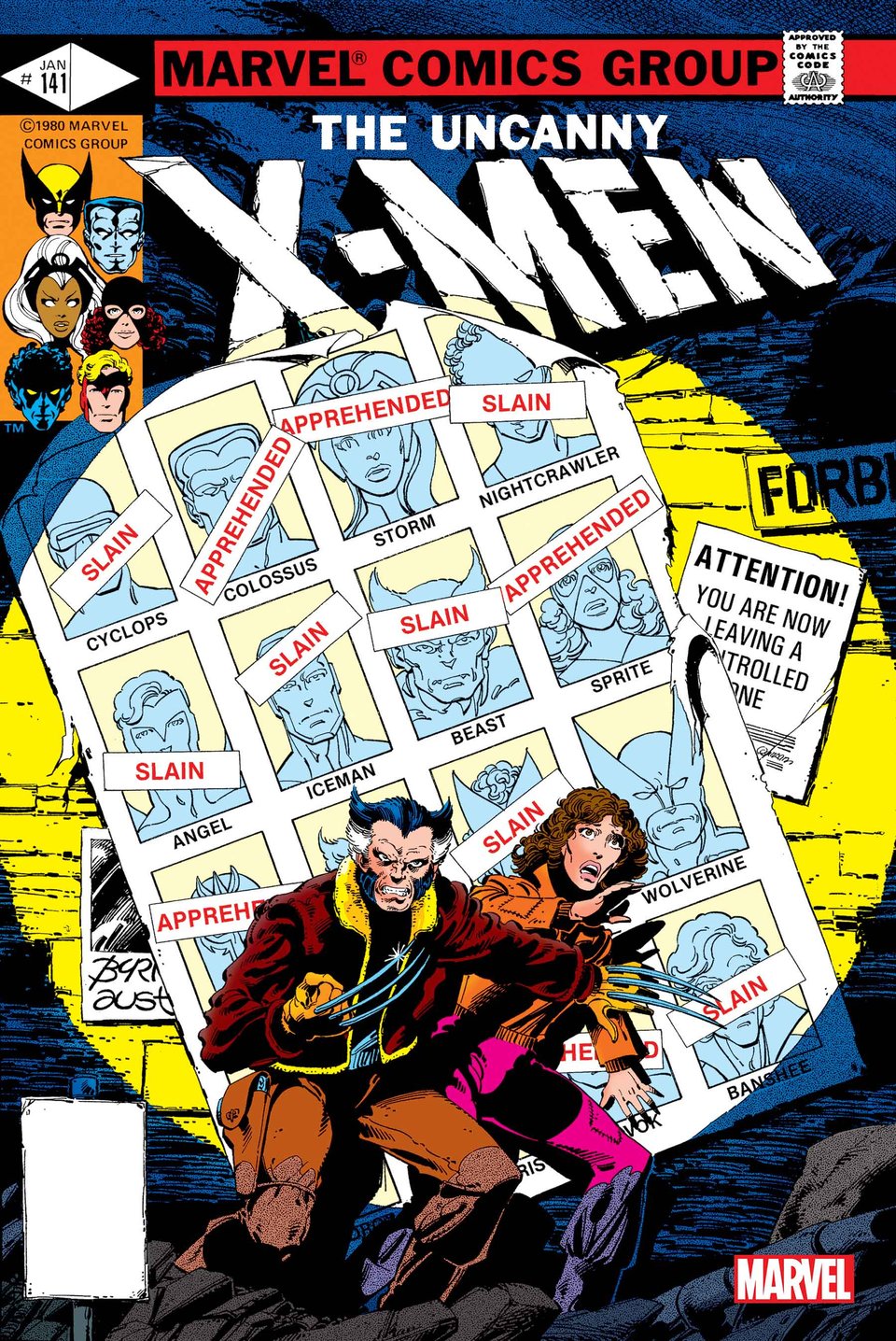
I didn’t start reading X-Men comics from the very beginning, but by the time I was in the heart of my collecting days—the mid-1980s and rolling toward the Nineties—I was an X-fan through and through. I got to know creators I liked—Claremont and Byrne, Cockrum and Adams, and as we headed toward 1992, Lee, Silvestri and Portacio. Like the other comics series I enjoyed, I religiously followed the storylines (Inferno! Fall of the Mutants! The X-Tinction Agenda! Zero Tolerance!), kept track of relationships and histories, knew every mutant-related character in the comics and their power—from the Morlocks to the Marauders; from the Shi’ar Imperial Guard to the Hellfire Club.
I didn’t start reading X-Men comics from the very beginning, but omnia mutantur—everything changes.
ONSLAUGHT
As the nineties barreled along—even with an animated series with a catchy theme and gripping storylines, and the best stand-up five-player arcade cabinet ever made—and bamfed the X-books into a bold new century, I kind of got overwhelmed with the number of X-Men comics I needed to buy and storylines I had to track.

I was growing as both a reader and creator, and found my interests broadening to other comic books: not just superhero books, but indie comics, war books, slice-of-life mini comics, fantasy, humor and more. Sure, I still always loved superheroes…but I needed to be a little more selective, and as I stopped buying comics for value and focused more on craft or compelling stories…well, the X-Men comics just didn’t interest me anymore. Yeah; I had the first appearances of Gambit and Bishop (still do!), and multiple copies of Jim Lee’s X-Men #1 (who didn’t?)…but once the Image Comics boys overhauled the entirety of the Marvel Universe with the post-Onslaught, short-lived, aggressively chaotic Heroes Reborn initiative, it was pretty easy for me to stop dropping Marvel comic books. I was reading more DC books at the time along with indie series and creator-owned graphic novels, anyway, and so cutting the X-books from both my pull list and focus was a no-brainer.
Also, remember: I hadn’t started reading X-Men comics from the very beginning. So walking away? No big deal. Omnia mutantur, baby. I had other books to read…
…and other books to make.
MUTANT GENESIS
And then Grant Morrison came along with Frank Quitely, and pretty much changed the game.
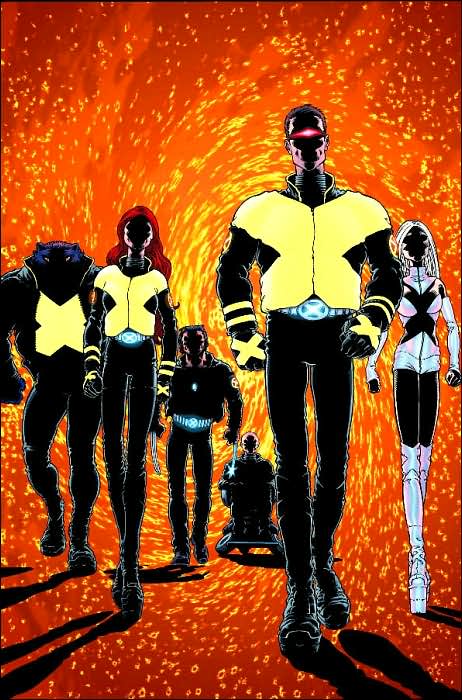
Now, I couldn’t tell you when I started to pay attention to the X-Men again. It definitely wasn’t at the start of Grant’s epic run—and it may not even have been when Joss Whedon came along to pen Astonishing X-Men. To be honest…
…I may have started reading X-Men comics again when I finally had a chance to write one.

I had moved to New York from Michigan a few years prior, and was doing my best to cultivate a comics career: immersing myself into the Brooklyn and NYC indie scene, connecting with other writers to self-publish a collective anthology, making mini-comics and consigning them to Jim Hanley’s Universe. My work was definitely more wide-ranging, focused on family dramas, interpersonal dynamics, ugly humor and Jewish history…but you know, I still always liked superhero comics.
I was attending conventions and meeting folks in the industry, and somewhere along the line I met a few editors at Marvel Comics—probably at a Wizard convention, or something local. And at the time, there were plenty of opportunities for a new, young creator to try their hand on short back-up or anthology stories for both Marvel and DC. At one point, I recall sitting in Axel Alonso’s office at Marvel—having been walked up by another friend and creator, who introduced me around—and pitching him an entire catalog of Spider-Man stories for the at-the-time groundbreaking anthology series, Tangled Web.
And then…at some point—possibly through Tony Lee, who had just sold a story to the editor—I got the chance to pitch stories for X-Men Unlimited.
THE NEW MUTANTS
I didn’t start reading X-Men comics from the very beginning, and at some point in the Nineties I dropped them as a whole. But suddenly I had a chance to write an X-Men comic, and I needed to catch up…and catch up quickly.
Thankfully, a dear friend had giant collections of X-Men comics dating all the way back to (the first) mutant massacre in 1986. So over the course of an entire week…I jammed as many X-Men comics into my head as I could get my hands on. I learned so many names, powers, relationships, characters, storylines and terms that I may have forgotten a few things I needed along the way, like my social security number or how to drive a car. There were so. Many. New. Mutants. And I needed to know who they were! Sage! Fantomex! Kid Omega! Beak! Xorn! There’s a new Magneto, but he might still be the old Magneto?! And what the heck is a Legacy Virus?! So many new ideas, so many new mutants…
…but I gravitated to the ones I knew best, and that’s how I ended up co-authoring a Colossus story with Mike Oeming for X-Men Unlimited #14.
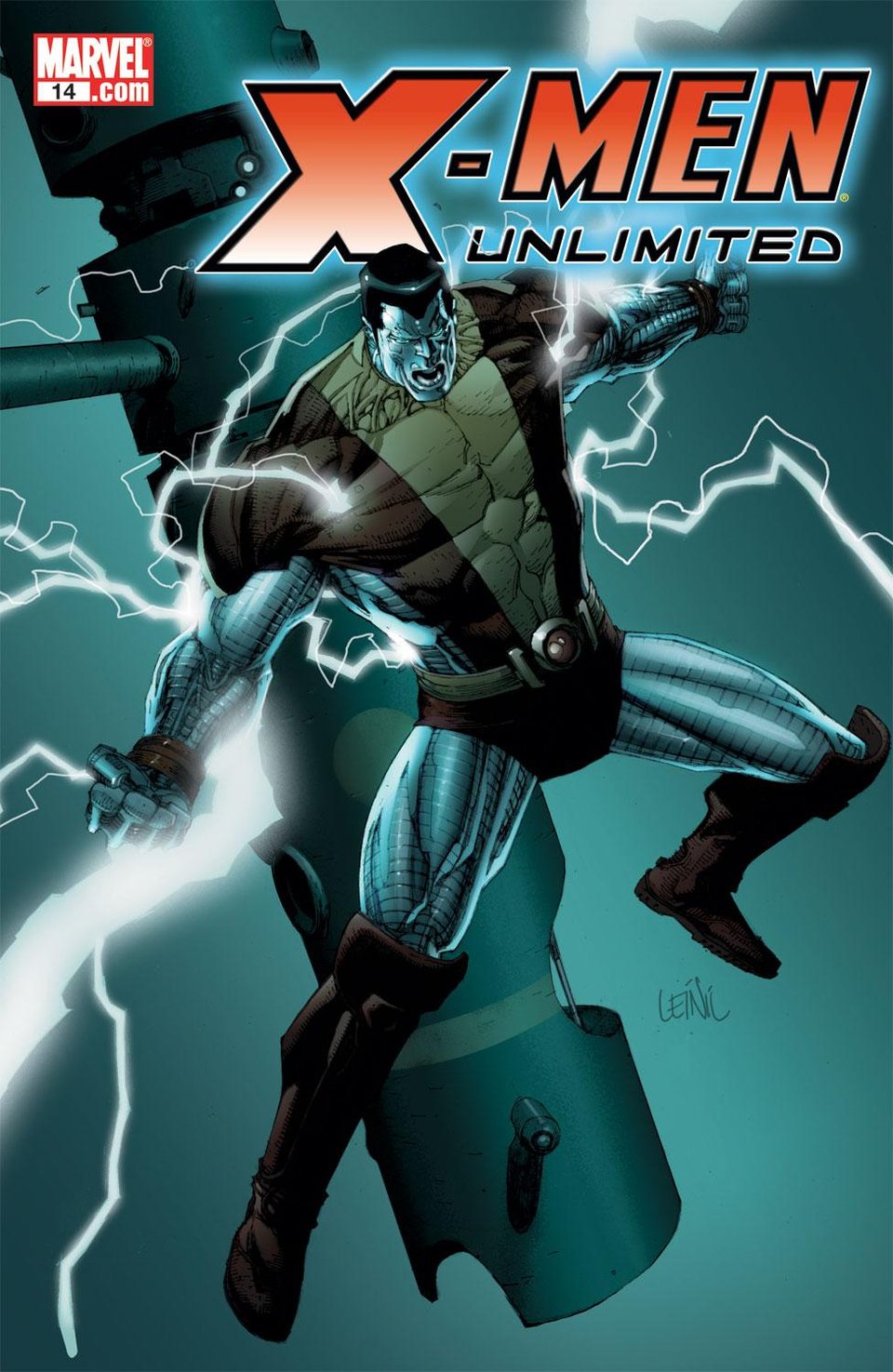
That said…this massive download of All Things Mutants, did one great thing for me (I mean, you know, besides getting me paid for my first-ever Marvel comic): it made me an X-Men fan again.
The creators! The artwork! The continuing storylines! The metaphors! The fastball specials! Everything that was old became new again in 2005 and 2006, and I found unique characters I hadn’t known that I now loved, and reconnected with old favorites along the way (Kitty Pryde, now that you’re old enough to go out with me, I just got married!)
Omnia mutantur. Everything changes.
DAYS OF FUTURE PAST
And then, at some point—like it always does—it changed again. I lost track of the X-Men for a bit. Then I found them again. They had new characters, new schools, new dynamics—first they’re in San Francisco, then they’re in Canada, somehow they’re also fighting a third and fourth Summers brother?—and I started having trouble keeping up with them again.

They fought the Avengers. They met the Guardians of the Galaxy. They brought some of the original founders ahead through time, and now there were baby X-Men hanging around—though not the actual X-Babies, for some reason. The X-Men changed hands, passed along from creator to creator (Aaron, Bendis, Gillen, Claremont again somehow), and each new author—like Byrne, like Dave, like Neal, like Grant, like Jim—brought something and someone new to the table, elevating certain characters and destroying others, We went from thousands of mutants to 198. First Magneto was right, and then Cyclops was right. Professor X died. Jean Grey died (again). Wolverine died. They all came back.
Finally, when I’d pretty much given up the plot and set my sights on writing other Marvel Comics character (and DC characters, and Star Wars—I was hardly picky), somewhere along the way everything changed again. Omnia mutantur.
And, like Grant Morrison, along came Jonathan Hickman with a bold new idea.
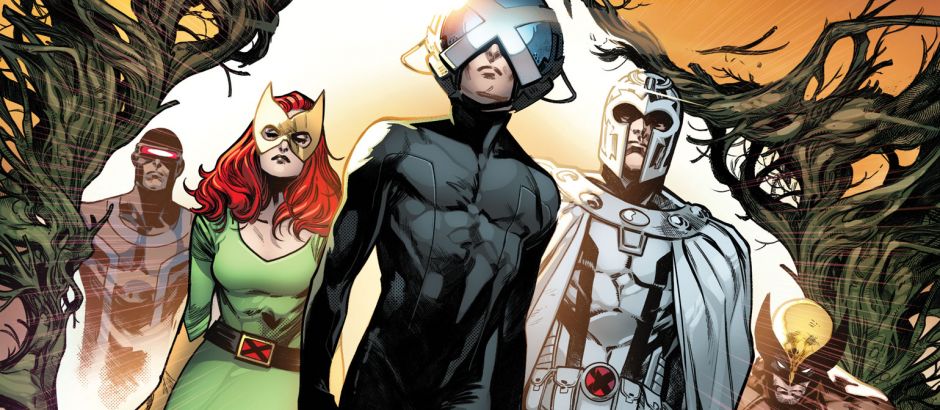
HOUSE OF X
Krakoa, dig? He’s this walking, talking island that almost ate a bunch of X-Men back in the day, and for a while there he lived on the lawn (or was the lawn; I can’t remember) of the Jean Grey School in Westchester, New York. But now, see, he’s back to being an island that walks like a man, but isn’t doing much walking, because…well, go read the thing.
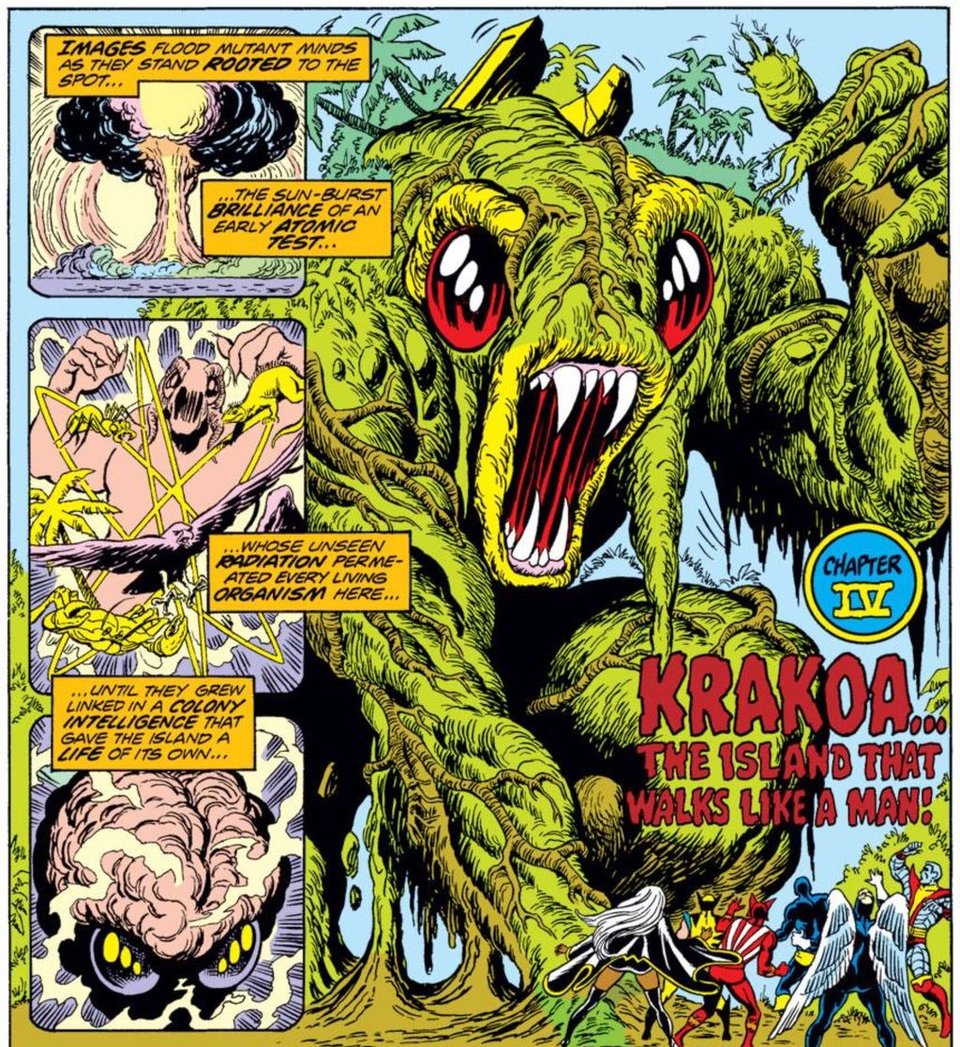
Basically, we get Mutant Nation but in a fun, compelling, politically captivating, overly-innovative way, wherein suddenly you—and everyone else you know reading the X-books—wants to be a mutant and live on that island.
You could be a good mutant, a bad mutant, a British mutant, whatever; Krakoa is for you, and if you are a mutant, you always have a home here. Oh! And you can never die, really. Until one day you can. But also? You can travel the world through awesome gates, and if you follow our rules this place is a paradise. Until it isn’t. And we have fancy galas where we dress up like members of Devo and glam rockers or like Flash Gordon but without the guns, and then we kick some ninja butt or end up building a mutant world on freaking Mars.
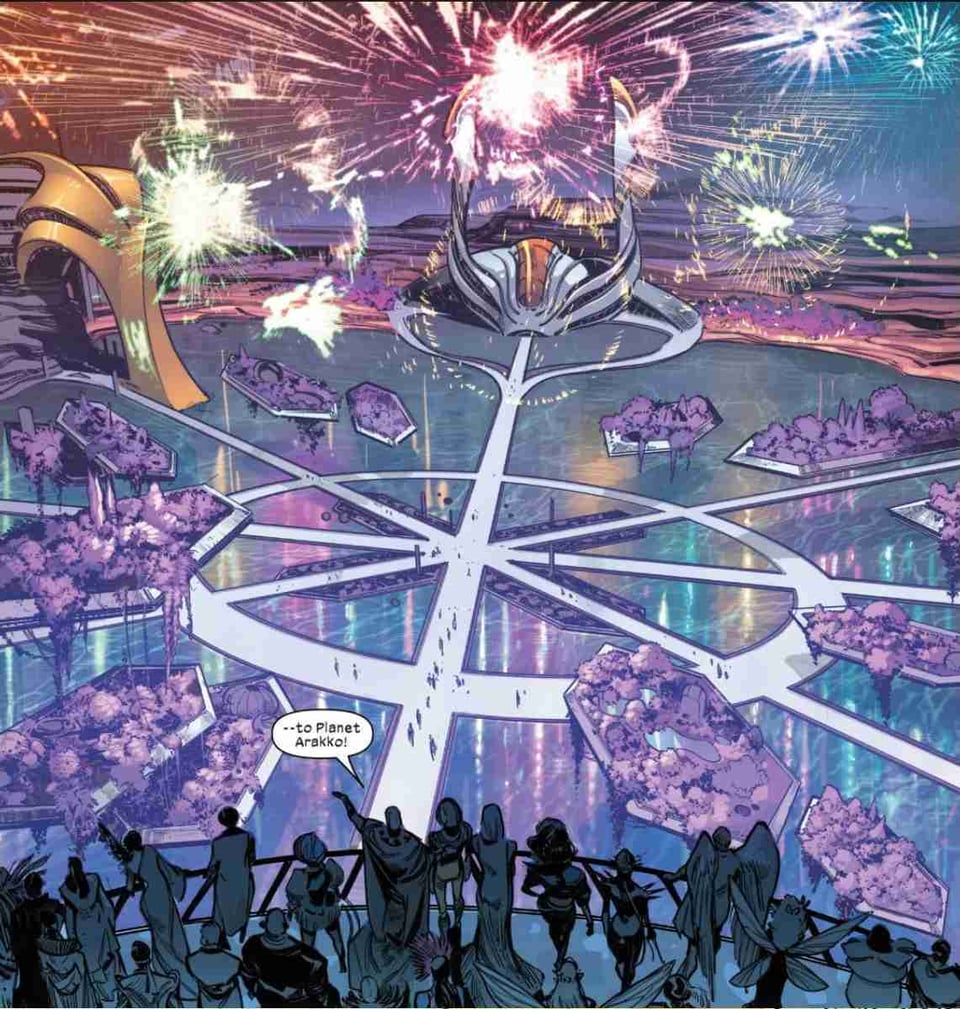
Until we don’t. And then we’re all hated and hunted and feared again, because robots and humans and Mister Sinister somehow (that storyline gave me a headache, honest truth) and also M.O.D.O.K. is a part of it, which is fun, because he’s a big floating head in a chair and has tiny lil’ arms and loves him some science. But we’re all on the run. And some of us are dead, and some aren’t. And some of us come back, and some don’t. Kitty Pryde is now Kate, and there’s a Captain Krakoa who used to be Captain America (I literally just read this one) and somehow Wolverine is just, you know, still Wolverine, same as he ever was, starring in fifty titles, same as he always did.

Things change. Things remain. Things change again.
Omnia mutantur.
THIS IS THEIR DAY, COMING YOUR WAY
And now the X-Men will change again. Shortly—maybe even this week—the Krakoan age of the X-Men comes to a close, like it or lump it, and makes way for something new again. New X-Men stories from the ashes, shepherded into the world by former Avengers and Fantastic Four skipper / mastermind editor / wearer of a great hat, Tom Brevoort and his Living Legion of X-Ceptional Editors. There are new creators, new teams, new relationships, and new ideas.
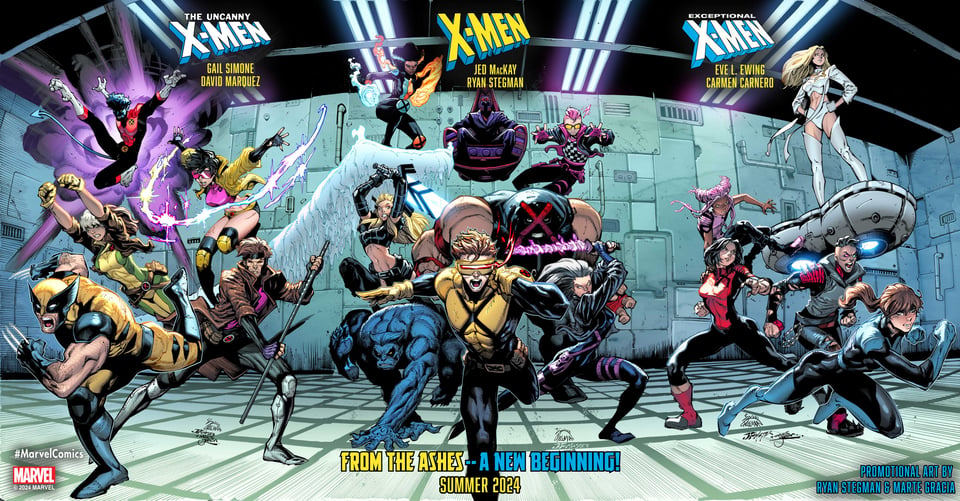
Some folks, like me, are happy about it and are ready to read fresh new X-stories in a brand-new paradigm from a who’s who of great comic book authors and artists.
Some are not.
Look, I kind of get it. I loved the Krakoan X-Men stories, the epic tales and books ushered out to excited readers by Hickman and his collaborating editors and creative hive mind. I would still love to belly up to the bar at the Green Dragon and order a drink from the Blob—as I once did at Harry’s Hideaway in Westchester, using an image inducer to protect my freakish mutant features (I swear, it’s eczema.) Who doesn’t want to stay in this world, root for an underdog nation that has become a world power, and keep watching the Marvel team get more and more inventive and less subtle with every story about what it means to be a nation of mutants with the world at your throat.
But it’s time for something new, friends. Omnia mutantur. Everything changes. Because if it doesn’t, it stagnates and dies. And then readers like me—as I had before—go off to find something new, something innovative, a fresh world to capture our attention.
Omnia mutantur. Everything changes
Change isn’t a bad thing. Stan Lee once famously said (whether you agree with him or not) that the secret to Marvel storytelling was “the illusion of change.” I firmly understand that—Wolverine is still always going to be Wolverine at the end of the day. Kitty or Kate or Katherine or Shadowkat or Shadowcat or Sprite…she’s the same person, the same mutant. There may be thousands of spider-people out there, hundreds of variations on the same old spidery story, but ultimately that story will always be about power and responsibility in some unique way. Hulk is Hulk, even if a different color or host, and Steve Rogers has gone on the record saying that he hopes someone else will pick up the costume when he dies (several did), even though we all know that the success to a good Captain America story is all about the man who fills it and carries the shield—whether that man (or woman!) be white, black or Bucky. There’s also a kind of jaded idea that even if a character dies, leaves, changes their costume or address, eventually all things change back to the way they were, no matter what new paradigms are tossed at them, or how much they change. Peter Parker will always don the red-and-blue suit again. Heroes will always return. The Fantastic Four will always be a family, no matter how often they squabble and fight. Doom is Doom. And the X-Men—no matter who is on the team, will always protect their own in a world that hates and fears them.

At heart, the costumes and the storylines may change, as do the creators and editors, but at its core the X-Men never really do. Things get shaken up to offer change as an illusion. And you know what? That’s okay. Because if we got five more years of Krakoan X-Men, hanging out as immortal beings on a Pacific, sentient island…drinking at the Green Lagoon…living in a treehouse off Central Park, and traveling through flowery gateways…if the current X-Men storyline—“The Fall of X”—wrapped up in a way where we went back to the Krakoan status quo for another half-decade…
…there’s a pretty good chance you may get bored. You may think, this is more of the same. You may even decide to leave the island and see what other worlds are around for you to enjoy. The illusion of change provides a bit of a reset through a storyline—a massacre, an inferno, a fall, an agenda, a genesis—so that you don’t get bored, and so that you don’t take for granted the world and characters you’ve come to love and embrace, and set them aside for years until, I dunno, someone comes along and gives you a chance to write them again (The Phoenix Chase, still available from Aconyte Book and Marvel!)
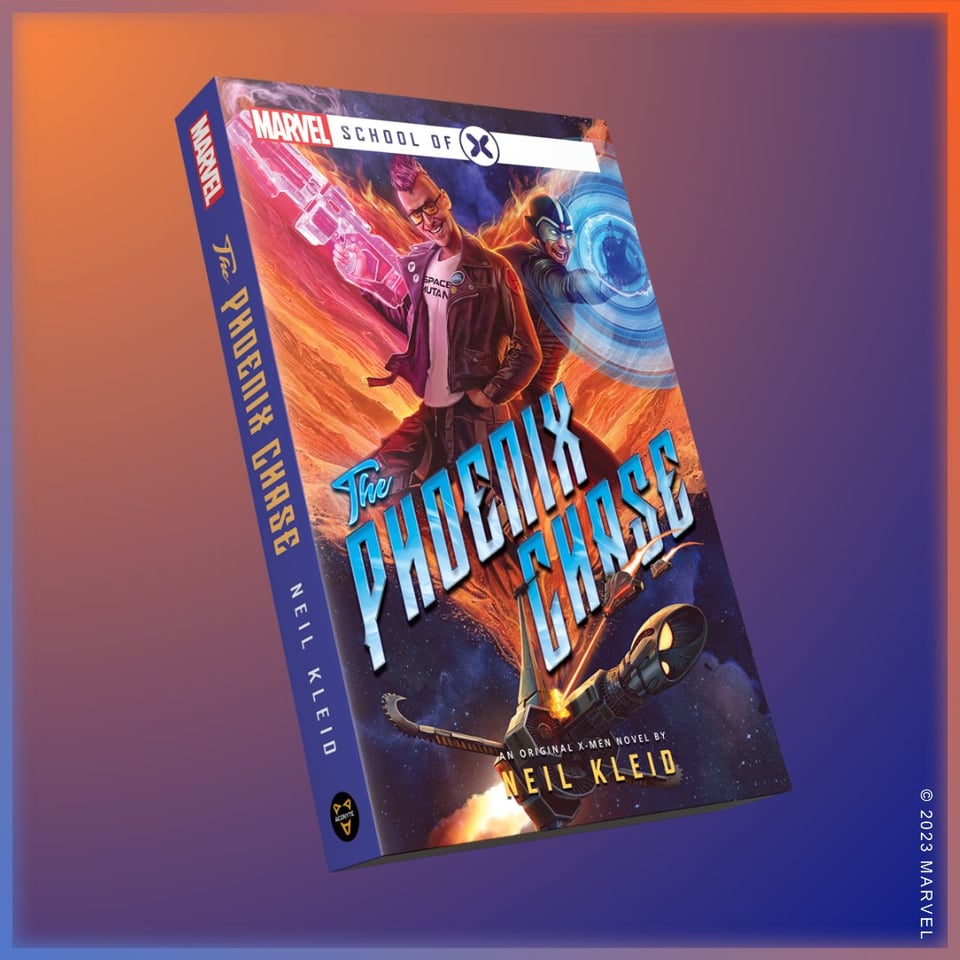
Omnia mutantur. Everything changes.
I’m looking forward to what’s coming next, friends. Give it a chance with me, will you?
PREVIOUSLY, ON X-MEN
Speaking of things changing, holy crap did you watch X-Men ’97?
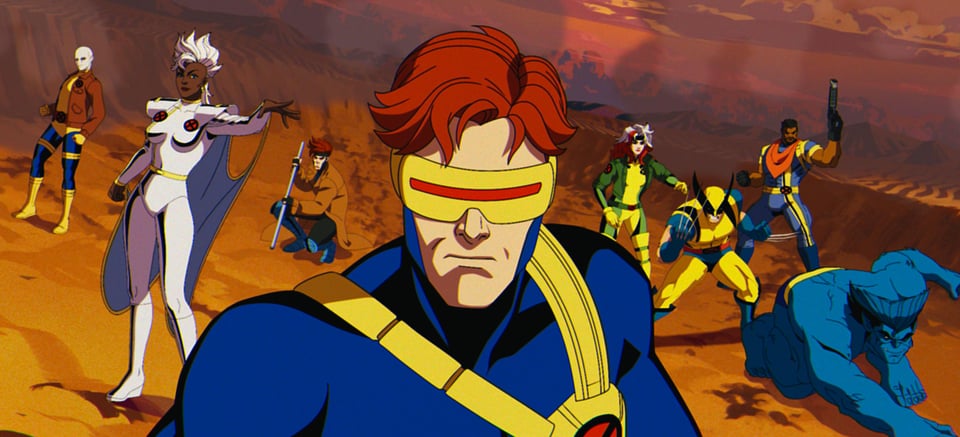
Look, I didn’t obsess over the 1990s X-Men animated series like others I know; I was already in college when it came out, and didn’t catch up with the show until years later. I’ll go on record saying that I haven’t seen every single episode from the old show, but the ones I watched were goofy fun and pretty great adaptations of classic X-storylines, voiced by actors clearly having fun with the role/s.
Overall, I have to say…it was pretty easy for me to dismiss the original show. I’ve never seen any other X-Men cartoon (other than the single episode “Pryde of the X-Men”, in which Wolverine is Australian for some reason, feels really connected to the arcade game, featured Lockheed the dragon and may have also inspired Madness in Murderworld, the X-Men computer game I bought and loved), and while I love the theme music, only a few of the episodes or stories (like anything featuring the Starjammers or the Shi’ar, or the episode with Captain America) really stood out.
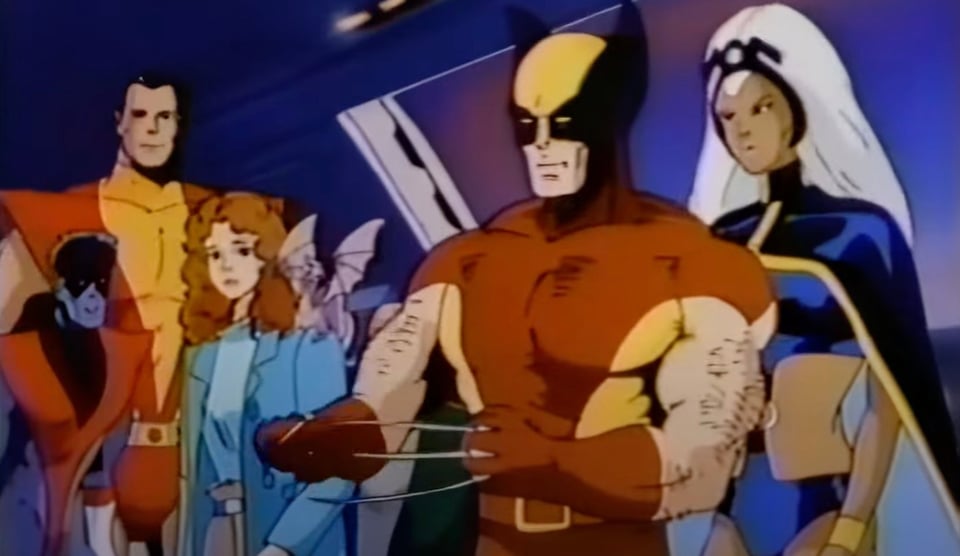
Even after Disney+ dropped it on their streaming service, I only revisited the episodes I’d liked—and took a chance on a few new ones, based on the stories or characters I’d gravitated toward over the last few years).
But then X-Men ’97 showed up. And boy, was I hooked.
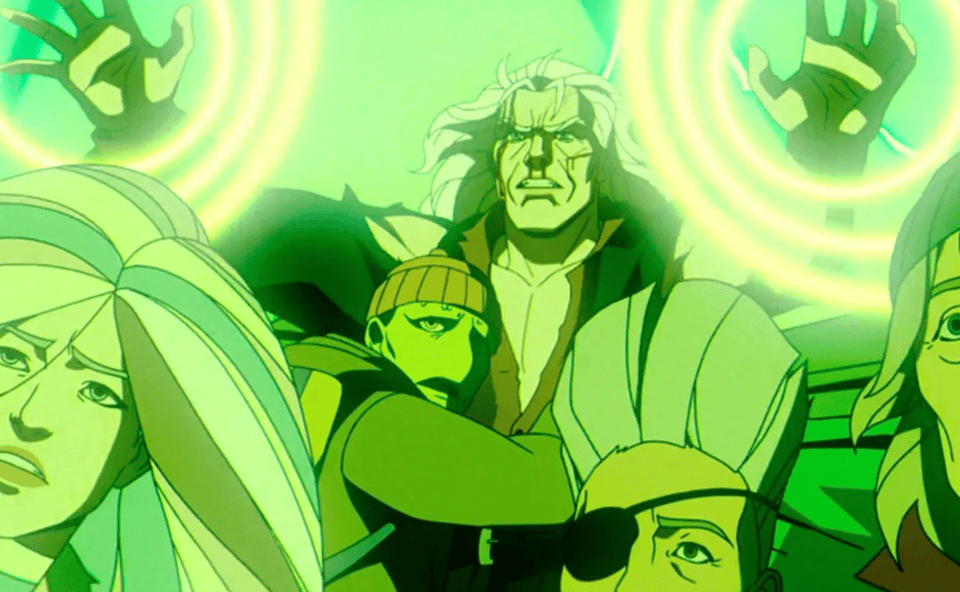
The animation is somewhat improved upon, but still harkens back the goofy, bulky nature of the original show, and the storylines incredibly compelling—clearly inspired not only by world events and culturally seismic shifts over the last thirty years…but also by some of the most resonant, captivating, groundbreaking stories told by X-Men creators stretching back to when I first picked up a copy of X-Men #210, wondering who that girl was standing next to the mutants I knew from the Secret Wars.
To a Jewish creator, I obviously connected with Magneto’s storyline—reformed in this new incarnation, as he was in the comics, and not the series’ central villain (well, for the most part, anyway.) The new series (only a single season thus far, hopefully to be followed in short order by a second) offers plenty of comics-accurate cameos and easter eggs, and insider jokes for fans of the comics, cartoon and even the live-action films. The relationships, like the comics, provide moments both visceral and emotional from the series’ main ensemble…and the villains are both over-the-top and in some cases highly unexpected based on the direction (misdirection now, I see) the show’s writing team seems to lead their viewers in the first few episodes, rooted in nostalgia (the fourth episode, “Motendo; Lifedeath - Part 1”, even sneakily references the nineties arcade cabinet, the replica of which sits in my basement), pathos and shock.
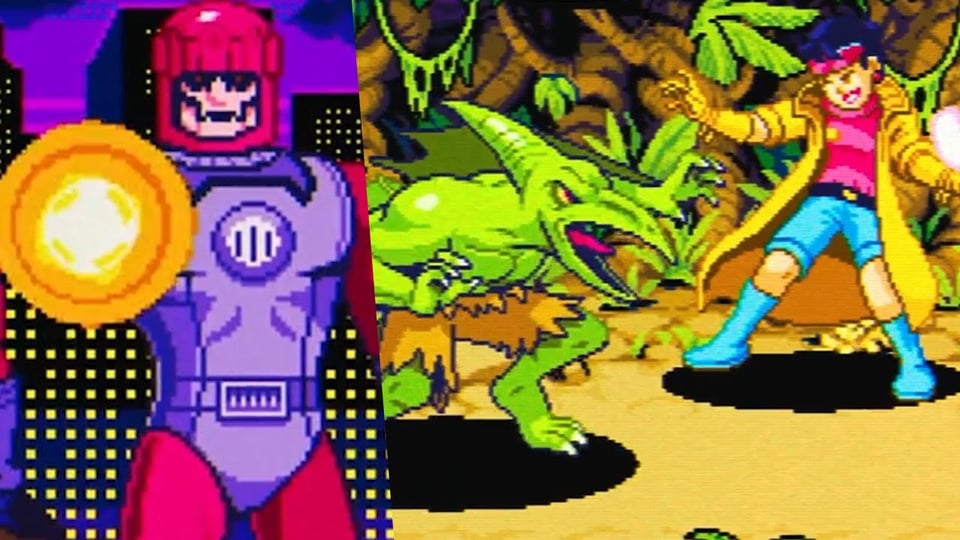
I’m not going to spoil what happens in the first season, for those still eager to give it a try. But I do urge you to do so, because even if you’re not a fan of the comics or an aficionado of everything that happened in the original show, I believe you’ll find yourself rewarded. If you are a fan, and are an X-pert like me, but have avoided the series because, well, cartoon…I have to say that it’s one of the most intelligent, mature, compelling, dramatic and engaging cartoons I’ve ever seen.
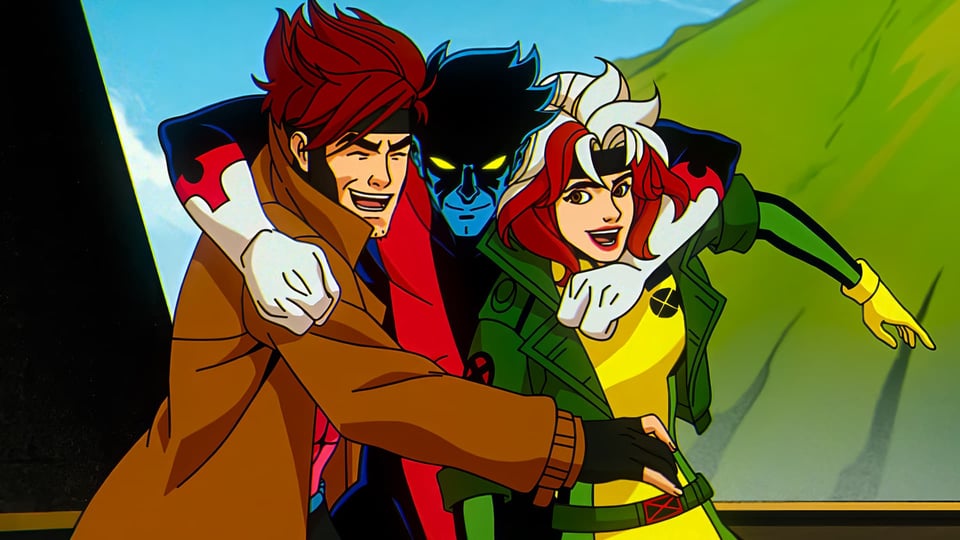
To me, my TV-loving friends. C’mon over, and let’s open brewskis with our plastic claws, stick on our Magneto replica helmets, hang upside down from the rafters like a blue-furred Beast and watch X-Men ’97 together. I’ve seen it already, sure, but will happily give it a rewatch. Maybe this time I’ll pay attention to all the cameos and easter eggs that I may have missed, and try to find if they mistakenly and accidentally added cell phones somewhere in a scene. Every rewatch reveals something new, you know? Each time you watch each of the episodes, you discover something new…and then, I swear, that everything changes.
OPUS MUTATIONES, or THE WORK CHANGES
Because “change” seems to be the focus of this installment, a quick update about The Business and the 2024 Writing PlanTM.
Last we chatted, I’d completed pitches for Projects Unwanted and Dog Day, and was starting to Project Long Ago. I also wanted to get back to writing Project Vigilant, a novel that’s currently holding at 26k words, and the first volume of Project Red, at 55 out of 85k. I was also talking about drawing a new project, and going from there.
Then I turned 49 a few weeks back (remember? We had a whole chat about it) and, well, everything changed again.
First, I got an email literally the day before my birthday which invited me to pitch for a license/brand that, well, if you know me is kind of a dream. That’s all I’ll say about it here (for now), but during the last week I crafted nearly ten pitches, and yesterday learned that two of those ideas were good enough to pass along to the next step. I’m pretty nervous about it, and the odds aren’t exactly in my favor but, you know, wish a Jew luck.
Then I had another comic book—we’ll call it Project Mantle—green lit this week, and quickly put together a fantastic team to get it done. I’m really excited about this one, and it’s a big, over-the-top departure from anything else I’ve ever written. The closest writing I’ve done to this might be Savor and The Phoenix Chase, because it’s simply a cathartic, joyous adventure story, and I really hope you all dig it when it drops. Right now, the plan is to launch the series Fall 2025, right after New York Comic-Con. I know that’s a stretch, but hopefully I’ll be able to tease snippets and art as it comes together over the next year.
Speaking of Savor (the YA culinary adventure graphic novel I co-authored with John Broglia and Frank Reynoso), I just finished the script for the short story that will be appearing in the Pots and Panels anthology I’d mentioned last time. It’s in John’s hands now, and keep an eye on this space for information about the Kickstarter campaign as it comes together.
And while we’re talking about Kickstarter, I also just finished final edits on “Silence of an Empty House”, the short Holmes & Watson story I wrote for Multiverse of Mystery, which will hopefully ship to backers soon.
Finally, it’s actually looking like I may be writing my first short film. More on that as it comes together over the next month or two…
So, based on all of that, here are the New 2024 and 2025 Writing PlansTM!
What Neil Is Writing in 2024*:
Project Mantle (5 issue mini-series, Fall 2025)
Project Vigilant (spec novel, at 26/85K words)
Project Long Ago (comic book pitch)
Project Red, Book 1 (spec novel, at 55/85K words)
Project Katz (script, short film)
*subject to change based on pitches currently under review
What Neil Is Writing in 2025*:
Project Mantle (5 issue mini-series, Fall 2025 - if I don’t finish writing it in 2024!)
Project Red, Book 2 (spec novel - if I finish Book 1!)
Project Orlando (comic book pitch)
Project Burn (middle-grade graphic novel pitch)
*subject to change based on pitches currently under review
And there it is, friends. An overhaul of the Writing PlanTM for the next two years…which, you know, may get revised again (I hope) based on some of the stuff I wrote earlier in 2024.
Omnia mutantur. Everything changes.
I’m looking forward to whatever changes next.
See ya in fourteen,
—Neil